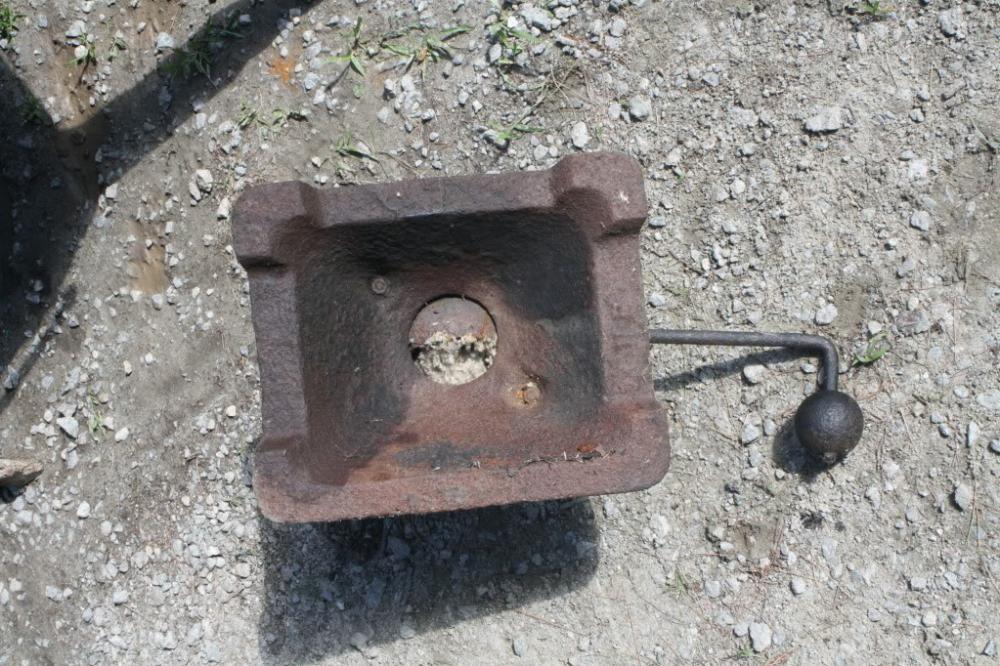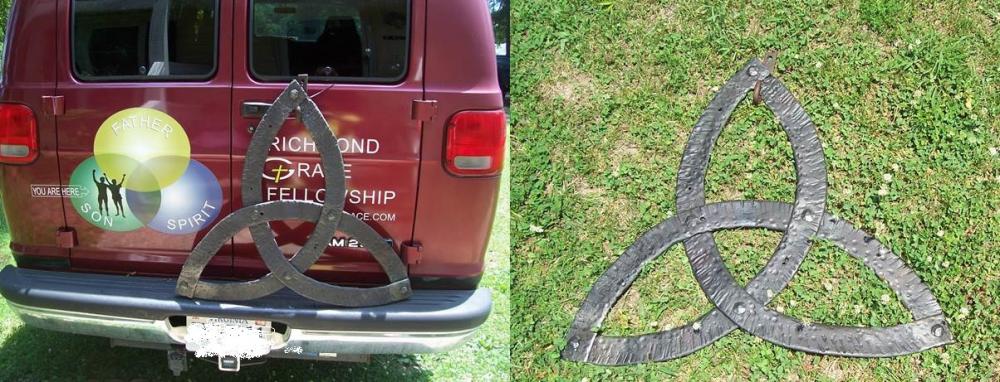-
Posts
198 -
Joined
-
Last visited
Content Type
Profiles
Forums
Articles
Gallery
Downloads
Events
Everything posted by Prokopto
-
okay called ESAB and they told me what the size and pitch of the threads are.
-
This is sure shaping up to be some great mystery or perhaps it's a high-holy secret.
-
The connector (the part that screws on to the mixer body) is a Victor 4-um-1 if that helps
-
Does anyone know what size thread dies I need for a size 100 Victor brazing tip? I broke my favorite rosebud off at the swage nut and wanted to rethread the stem to fix it. My Kindle completely messed up my last post. I went back and edited the copy but didn't notice that "threads" had been split into "the ads" *sigh* So I'm posting this again so the title is accurately reflective of my question. Please don't ban me or put me in iforgeiron timeout. Bill
-

Anvil Source Material
Prokopto replied to Prokopto's topic in Power Hammers, Treadle Hammers, Olivers
Great suggestion thanks- 10 replies
-
- scrap yard
- scrap
-
(and 2 more)
Tagged with:
-

Anvil Source Material
Prokopto replied to Prokopto's topic in Power Hammers, Treadle Hammers, Olivers
awesome suggestions friends I will give that a try.- 10 replies
-
- scrap yard
- scrap
-
(and 2 more)
Tagged with:
-

Anvil Source Material
Prokopto replied to Prokopto's topic in Power Hammers, Treadle Hammers, Olivers
Glen, I'm after a 45-60 pound hammer so I'm assuming the recommended ratio is 10:1 so I guess I need something 450-600 pounds. I'd be willing to laminate some 1" plate in strips to get to that weight as well but one solid piece is preferred. Bill- 10 replies
-
- scrap yard
- scrap
-
(and 2 more)
Tagged with:
-

Anvil Source Material
Prokopto replied to Prokopto's topic in Power Hammers, Treadle Hammers, Olivers
Thank you pnut. I should also add that I really want to avoid “new steel” prices.- 10 replies
-
- scrap yard
- scrap
-
(and 2 more)
Tagged with:
-
Dos anyone know where a fella could find something from which to make an anvil suitable for a 40-60 pound power hammer? I live in Mechanicsville, VA and was thinking maybe the shipyards in Norfolk would be a good starting point but most scrap yards I contacted are "Single-Contract Sellers" and can't sell me even so much as an old rusty nail. Any help would be welcomed. Bill
- 10 replies
-
- scrap yard
- scrap
-
(and 2 more)
Tagged with:
-
Indeed, I gave him an old hook from the same wagon that was 5/8" wrought iron and he rearranged his office so that it could hang from a wall stud and still be behind his desk. Actually, I bent the sections along the flat plane by dropping them hot across the anvil horn which I hear is called an inertia bend.
-
You're hooked now.... :-)
-
thanks
-
Does anyone know if the different components of the fire pot originally had any sort of dope or sealant between all the connections? There is the fire pot, the ring that has the sockets for the clinker breaker, and the tuyere pipe. It all fits quite snugly but I was wondering if those connections were originally sealed with something.
-
sweet I have some mild steel that will work. thanks
-
thanks. yes, he first tuyere cover I made for my buffco rivet forge was 1/4" stainless and it flaked away after two years and got thin especially where I'd drilled it... this last one has not so indeed it must be hit and miss. The issue with the stainless in the rivet forge is that sometimes I see it glowing red so I know it is sinking heat away from my work. Still I can forge weld in it just fine so it must not matter as much as I think.
-
Yes my tuyere will require about 2.5" x 3.5". I have a super powerful champion blower that I've been holding on to for about 4 years. I can't wait to get this thing built and lite it!
-
Great idea, I was just wondering where to get a piece of solid cast iron the right size
-
wow, okay great so a chunk of 1045 or anything will work? Does it need to be solid or do you think a clinker breaker welded up from 1/4" flat bar would be okay?
-
okay I found a 2 1/2" x 5" 304 stainless bar to shape into the clinker breaker. It is my experience that stainless holds up well as a fire pot component. (I have used 1/4" 304 plate for a tuyere cover for years). How much of a heat sink will this clinker breaker be at 2 1/2" x 3 1/2" long?
-
Thank you so much Mr. Powers. I will try those suggestions.... ahem... except for the titanium. :-)
-
Does anyone have or have information on a Champion Whirlwind 712 forge pot? I recently acquired one that is missing the clinker breaker but is in otherwise great shape. I would like to know a few things... of what material should the clinker breaker be made so as to sink less heat from my fire and does anyone have a picture of one of these fire pots? (here is a picture of one like mine only with the clinker breaker but I cannot see it well enough to copy its design) Thank you in advance for your kind consideration, Bill
-
thanks all for the encouragement... means a lot to a rookie.
-
This is a Trinity Knot I made, from a 19th century wagon tire, for my mentor as a gift. It took me almost 40 hours. (part of that time was trying to figure out how to bend the wagon tire sections on their opposite plane). The wagon tire was almost 10 feet in circumference and the entire thing is 34 inches across and weighs 33 pounds. The hanger is just a bit from the same wagon. Bill
-
I made these for my Associate Pastor and Assistant Pastor at church to say thank you for their many many years of service.


.thumb.jpg.9d57f6918134764d74aaae7b3a4ff4a1.jpg)
